Hawthorn is a leaf fall tree or a tall shrub with white or pinkish flowers and red bulk berries. The synonyms of the hawthorn will boldly become a fortress and power, and the reason for the longevity of the shrub and the strength of the branches. Trees are capable of living more than 300 years, and the long-liver trunks are characterized by hardness, which makes them excellent raw materials in the woodworking industry. Growing the plant hawthorn on decorative and medicinal needs. An unpretentious plant will decorate the variety of colors of the garden plot and serve a barbed in a difficult obstinate barrier. The medicine uses a hawthorn from the 16th century, and modern doctors use all parts of the plant to purify the composition of the blood, the normalization of the heart and blood vessels. From individual trees, you can collect more than 75 kg of harvest. Not only people use a plant. Shrub is a honey, for which bees love him and attend.
Description of the Plant Hawthorn
Hawthorn - a representative of a family of rustic and is a leaf falling bush or a tree at a height of 5 m, sometimes reaching 12 m. Occasionally you can meet at first amenities.
Exterior plant type:
- The crown shape resembles an asymmetric ball, pretty thick, equipped with strong branches, growing directly or like a zigzag. Bark plants brown, but happens and gray shade.
- In the people, the hawthorn cliches the barrel for the abundance of purple red barns. The spikes are formed from the kidneys as a result of the termination of the development of escape at the same time with the advent of foliage. The sizes of the spines vary from imperceptible 0.5 cm to the giant 10 centimeter needles and in most cases they are delicate. Asian representatives of the hawthorn, however, as the European, almost deprived of prickly spikes or have a small needle size
- The leaves of the hawthorn grow on the spiral branch, have an ovoid shape and twisted at the end. The foliage plate, depending on the type of plant, is the whole, dissected, or resembles feathers or blades. Most often, the leaves hold the color up to the cold and fall green or brown. Some varieties with the onset of autumn attract the gaze of foliage painted in gold and purple color.
- Flowers hawthorn small (1-2 cm) and multiple, with five petals collected in shibidal inflorescences with a diameter of 5 cm. The color of flowers white or all shades of pink, there are terry. A distinctive feature of the flowering of a hawthorn is its short-term and unusual smell. For four days of flowering near the tree, the smell of storms of fish is smelling. This is due to a special substance in the composition - dimethylamin. The period of flowering from May to June. Taste of flowers tart, bitter.
- Fruits of the hawthorn resemble small apples, measuring from 0.5 cm to 10 cm, depending on the variety. Edible berries hang in a brush on a long leg, ripen at the beginning of autumn and stay on a bush for two months. Berry form round or oval. At the top of the fetus under the skin are located from three to five triangular bones. Fetal color depends on the type of plant: from pale yellow to bloody-red. Some varieties have black berries. The fleet of the fetus is with sour taste. Fruption begins after 10-15 years of life.
- The root part of the Hawthorn applies deeply and wide.
Types and sorts of hawthorn
There are more than 380 species of plants in the world, they contain a huge number of varieties and variations. Types of hawthorn differ in decorative and nutritious purposes, color, size and shape of leaves, flowers, fruits and branches. In Russia, only 50 species are represented by wild and garden crops.
View: hawthorn prickly, ordinary
- Hawthorn Ordinary - the most studied and most popular type of plant for blanks. This species came from the western part of Europe and in the territory of Russia does not occur wild. In the middle lane of the Russian Federation, it is specially grown only in gardens and parks.
- This is a leaf-old tree-like bush or a tree, reaching a height of 5 m with a barrel with a diameter of a meter. Crown is dense, in form - oval, branches with spikes. The color of shoots is purple, the color of the wild-sample flowers is white, on cultured individuals they are pink and even red.
- Blossom begins at the end of spring and reminds of apple tree.
- The foliage has a wide ovoid shape, the size of the leaves does not exceed 5 cm, naked. Depending on the location of the leaves on the tree, they have a different structure: from the bottom one, and the separation of the sheet on 3-5 blades begins to the top.
- The fruits of the hawthorn of ordinary small, resemble the shape of a ball, oval or a pear with several bones inside. The grade affects the color - from yellow shades to unusual purple paints. Berries are widely used in cooking for the preparation of flour, beverages, jams.
- A feature of this species is its slow growth and excellent haircut.
The most famous sort of hawthorn barrel - Paul Scarlet.
- Difference of this variety is his decorative purpose.
- Blowering Hawthorn Paul Scarlet is incredibly beautiful thanks to the abundance of terry carmine flowers of umbrella inflorescences.
- The crown of a young village, reaching 6 m in height, cone-shaped with age acquires a rounded shape, is littered with large sheets and two centimeter spines. Ahead of the landing of a representative of this variety, gardeners should significantly proper and crop branches on half the length.
- Fruiting is quite rare, but when the berries appear on the branches, they acquire a brown red color and size up to 12 mm.
Hawthorn: Photos of Variety Paul Scarlet:
View: Blood-Red Hawthorn, Siberian
- This kind of saturated red color is not only fruit, such a color and stamens, and with the onset of autumn the foliage of the plant acquires a purple shade. There is a tree with bloody-red berries in Russia, Mongolia, China and in Asian countries.
- In appearance, this is a leafy high bush or a tree, the height of which can reach 8 m. Open Croon of the representative of this species contains dark green leaves and spikes on branches of a length of about 5 cm. The tree trunk reaches 15 cm in volume.
- The flowering continues one or two weeks with white flowers in the inflorescence of the shield.
- Siberian hawthorn - a large-scale view with round or in the form of an ellipse shiny red berries.
- The size of a 15 mm berry. The harvest of the hawthorn in the form of fruits and foliage is widely used in cooking, traditional medicine. The taste of the berries is sweet, slightly starchy.
- The hawthorn is filled with magenta foliage in the fall, for which the Siberian species is popular as a decorative vibrant hedge. The plant is wonderful to molding in the summer, and in the winter it will decorate the garden plot with bright red berries, which will last the entire frost period.
View: hawthorn Far Eastern periston cut
- In the wild place the place of growth of the view - the Far East, the Amur region, Primorye, China, Korea. This is the most favorable example of the cultivation of a gardener garden for landing in Russia. It is often represented by a corruptously growing chore at an altitude of up to 4 m and a branched crown. The name is due to the interesting structure of foliage: brilliant bright leaves of the tree have a deep cigarette dissection and possess 5-7 blades. The branches are equipped with spiners, no more than 20 mm.
- Flowers change the color from white to pink over a period of flowering and are collected into punch inflorescences.
- The fruits of the hawthorn of the peristion cutter reach in the amount of 1.5 cm, but there are some forms of this type of fruits of about 2.5 cm. Maturation is coming to September, before the arrival of winter, the berries disappear and very rarely live on branches until January. The taste of berries is sour and sweet and more pleasant than the bloody-red view of hawthorn. Young fruits are dense and slightly dry, as the flesh is ripening, it becomes soft and looseness.
View: Hawthorn Soft, Red
- The birthplace of this species is considered to be North America, so most of the representatives live in the northern regions of the United States and in Canada. A plant grow in the form of a tree to 8 meters high with a powerful one or more trunks.
- Crown has a spherical, oval shape with enlarged egg-shaped leaves up to 10 cm long and up to 7 cm wide. The sheet is pubescent at the base, the edges have a sawdue. The kind of large-born, since the maximum ships length reaches 9 cm.
- Blossom comes from the end of spring or at the beginning of summer with white flowers of 10-15 pieces of 2.5 cm each.
- The fruits of the hawthorn grows up to size 2 cm orange-red pear-shaped. Edible berries have the yellow pulp of mild pleasant taste. This species is the most large-scale hawthorn among the others.
Harvesting harvesting
The breeding of a hawthorn in the garden plot has both a decorative function and medicinal. For the prevention and treatment of heart diseases, vessels, nervous and digestive system, the drug picking from flowers and berries with a hawthorn bush helps.
The types and varieties of the hawthorn are multiple, among them a certain amount occupy decorative use forms that are not intended for eating or having rare fruiting. Of the 50 species common in Russia, the most launched wild look for traditional medicine is a blood-red hawthorn. In the garden sites, in most cases, a hawthorn ordinary is cultivated.
How correct and when collecting a crop:
- The medicine collection of the hawthorn includes inflorescences and plants berries. Based on the landing region, flowering time Miscellaneous: from spring to summer. The period of flowering is limited only to 3-4 days and is significant, the need to collect inflorescences is not completely discontinued. The discontinuished flowers are short-lived, in the process of collection they are creepy and become useless for drying.
- Exclusively dry flowers are suitable for the billets, therefore, the day when collecting hawthorn flowers need to choose sunny and without precipitation. You should not start collecting and early in the morning, the flowers can be dew. Collection of wet inflorescences will lead to their rapid rot.
- Collect flowers in a cardboard box, after laying out one layer on the fabric or paper for drying. If you use dishes or packages as a container for collecting dishes or packs, fragile flowers will be adhered to each other, becomes brown and ultimately rupture.
- Not only inflorescences are collected on the drying, but also the bright fruits of the plant. The decorative varieties of the hawthorn do not differ in rich fruiting, and sometimes they do not have a fetal fetus.
- Berries may be absent and on the fruit grade of the plant. Therefore, before going off for the berries of the hawthorn, it is worth paying attention to the weather conditions of the preceding fees. If there have been a rapid heavy rain, large temperature differences in those days when flowering occurred or the flowers did not have enough insects for pollination, the berries may not appear at all.
- Starting the collection of berries follows from their time ripening. It varies from many varieties of the plant and begins from September until the first frosts.
- Properly collect fruits are not one berry, but by shields.
Planting hawthorn and plant care
Hawthorn - a plant that is resistant to frost and drought, not demanding of the composition and the nature of the soil. The powerful root part allows the plant to develop and on the soil of dry peat. Hawthorn prefers landing site where there will be enough light. In the shade, bloom will not be abundant. Favorable to the growth and development of the plant is the soil abundantly moistened, highly calcined, well-fertilous and drained.
The reproduction artificial way is carried out in the following ways:
- seeds;
- cuttings;
- root chains;
- vaccinated: more often used to reproduce decorative and valuable instances of the hawthorn in the garden plot.
Planting hawthorn from seeds:
- Plant landing in a seed method is quite durable. The ripe seed has a rather solid shell and requires up to 2 years of stratification before starting landing to the ground. Less time for training will be engaged in unreasonable seeds, since their shell has not yet managed to become hard as sting.
- If the plant is seated to obtain useful berries, then the hawthorn, who was raised from the seed to begin fruiting at least 10-15 years after landing. In this way, breeders use breeders to obtain new varieties.
- For improved germination, you need to collect non-fermentation from the tree. Then the stratification process should be conducted within 8-12 months.
- Stratification is carried out as follows: unreleased seeds are placed in a small layer in the box, mixing with perlite or sand. The box is placed in a cool place, for example, a basement, at a temperature of 3-5 degrees.
- After preferably to spend scarification. It is necessary to damage the seed shell so that it is better sprout. For this, they are placed in acid for 2-3 seconds or mixed with enlarged sand.
- Before starting landing seeds, you need to soak them into a slight warm water for 4-5 days and in a warm room.
- Sowing seeds are carried out in autumn for a temporary place of stay. The first in the spring after sowing only a third of the planted material is rocked, the seedlings on the second spring becomes another one more. Two years after landing, sprouts can be transferred to a permanent place.
How to plant hawthorn root process:
- This is the easiest way in which in a short time you can get viable seedlings of the hawthorn. It is in the filing of processes and a transplant to a new place. The method of reproduction of the root pig is applicable only to a corrupt hawthorn.
- In an adult plant, they find shoots that grow close to the soil. Soothes should be shovel as a substrate so that part of the branches remained above the surface of the earth.
- Since the escape in this form becomes not entirely stable, it is necessary to fix it with a wire branch bent into the arc to the ground.
- After a few months, the roots will appear, and you can dig out the escape from the parent plant and jumped into the right place.
Plant care suggests:
- An adult plant tolerates drought well, while young seedlings will require additional watering in the most dry weather. Moisture will continue longer in the ground when making the soil around the plant.
- Watering the hawthorn in the arid periods will help him longer be fruitful, it is longer to keep the berries on the branches and improve the flowering.
- A decorative hawthorn requires fertilizer in spring and at the end of summer. As feeding, the organic and mineral fertilizers are used, which are brought with a break in a couple of days.
- If the purpose of cultivation is to collect fruits, fertilizers should be made three times a year. The first point of the doctorate should be in the spring when the flowers did not start active growth. The second time fertilizes when flowering appearance. Last time - when the berries begin to divert.
- The next position of the care of the hawthorn is pruning: sanitary and decorative. Sanitary is carried out in the spring by removal from the plant dry branches having damage or illness. The plant refers quite well to molding and decorative trimming.
- The root part of the adult plant is very developed and occupies a large area. As a result, the transplantation of the plant for a permanent place should be carried out until they reach 6 to three years.
Landing in the gardening site of the hawthorn - the case is light, which will subsequently give bright colors in the design of the local area and gives the benefit of the red fruits remaining on the branches all winter. The task consists only in choosing the most suitable variety of plants, since their huge amount.

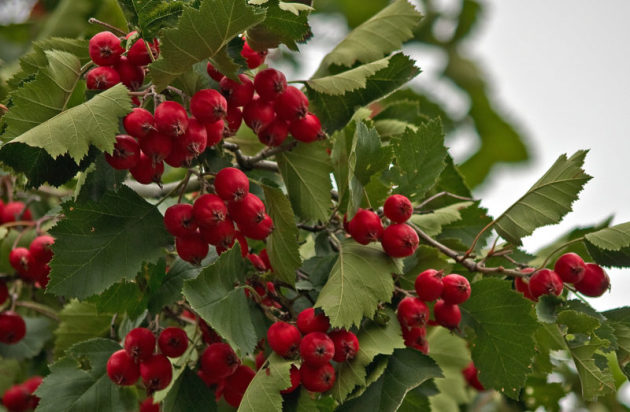
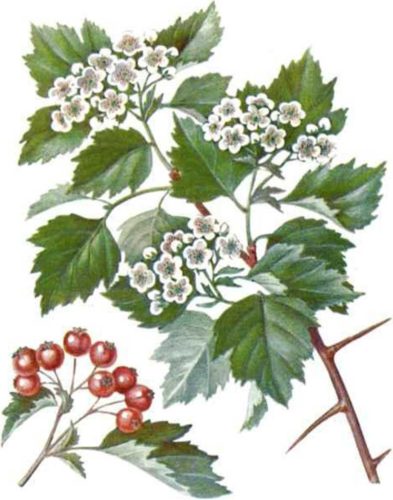
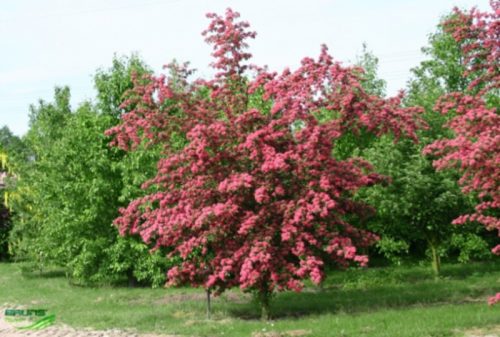
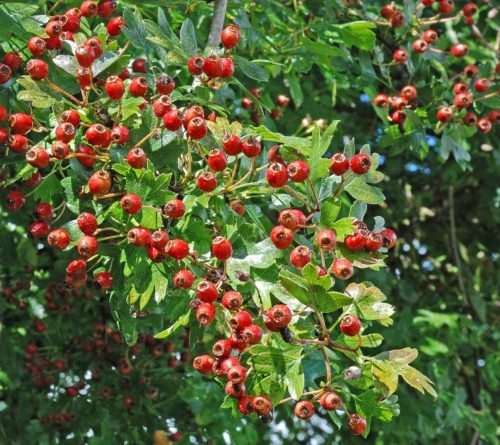
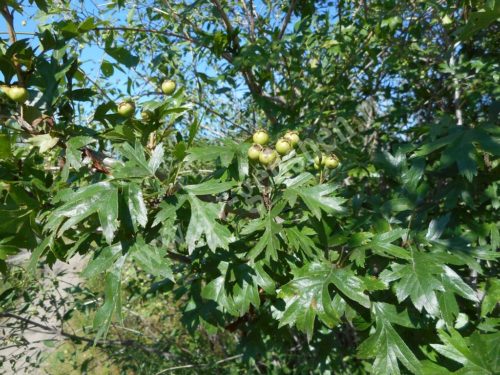
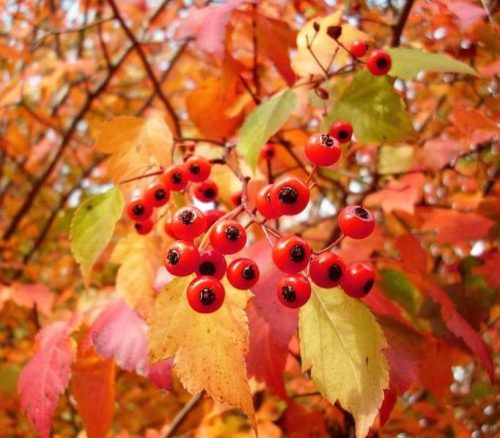
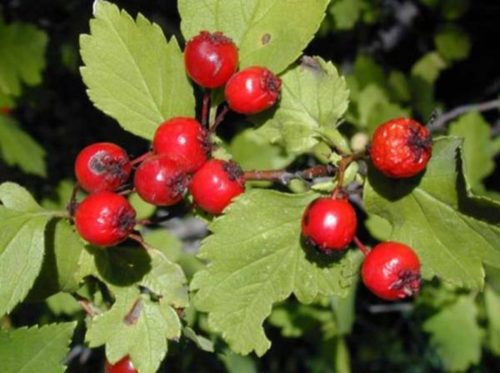
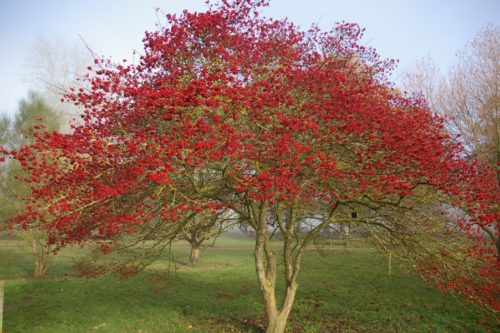












 Start a discussion ...
Start a discussion ...